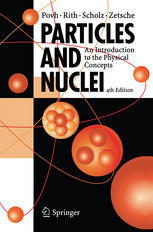

Most ebook files are in PDF format, so you can easily read them using various software such as Foxit Reader or directly on the Google Chrome browser.
Some ebook files are released by publishers in other formats such as .awz, .mobi, .epub, .fb2, etc. You may need to install specific software to read these formats on mobile/PC, such as Calibre.
Please read the tutorial at this link: https://ebookbell.com/faq
We offer FREE conversion to the popular formats you request; however, this may take some time. Therefore, right after payment, please email us, and we will try to provide the service as quickly as possible.
For some exceptional file formats or broken links (if any), please refrain from opening any disputes. Instead, email us first, and we will try to assist within a maximum of 6 hours.
EbookBell Team

5.0
100 reviewsThis well-known introductory textbook gives a uniform presentation of nuclear and particle physics from an experimental point of view.
The first part, Analysis, is devoted to disentangling the substructure of matter. This part shows that experiments designed to uncover the substructures of nuclei and nucleons have a similar conceptual basis, and lead to the present picture of all matter being constructed from a small number of elementary building blocks and a small number of fundamental interactions.
The second part, Synthesis, shows how the elementary particles may be combined to build hadrons and nuclei. The fundamental interactions, which are responsible for the forces in all systems, become less and less evident in increasingly complex systems. Such systems are in fact dominated by many-body phenomena. A section on neutrino oscillations and one on nuclear matter at high temperatures bridge the field of "nuclear and particle physics" and "modern astrophysics and cosmology".
The fourth edition includes new developments, in particular a new section on the double beta decay including a discussion of the possibility for a neutrinoless decay and its implications for the standard model. The concise text is based on lectures held at the University of Heidelberg. It has been translated into many languages and has become a standard reference for advanced undergraduate and graduate courses and includes numerous exercises with worked answers.